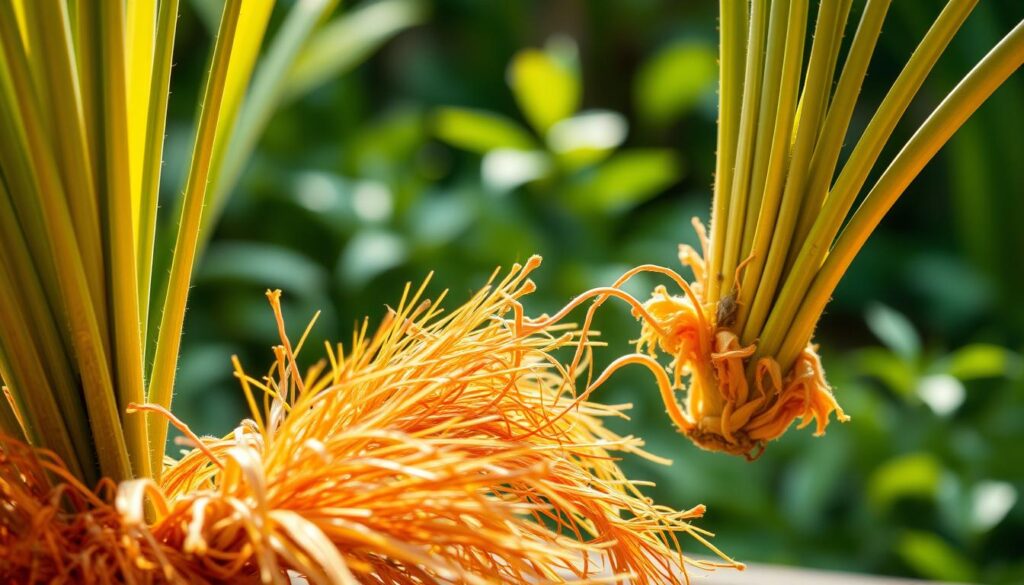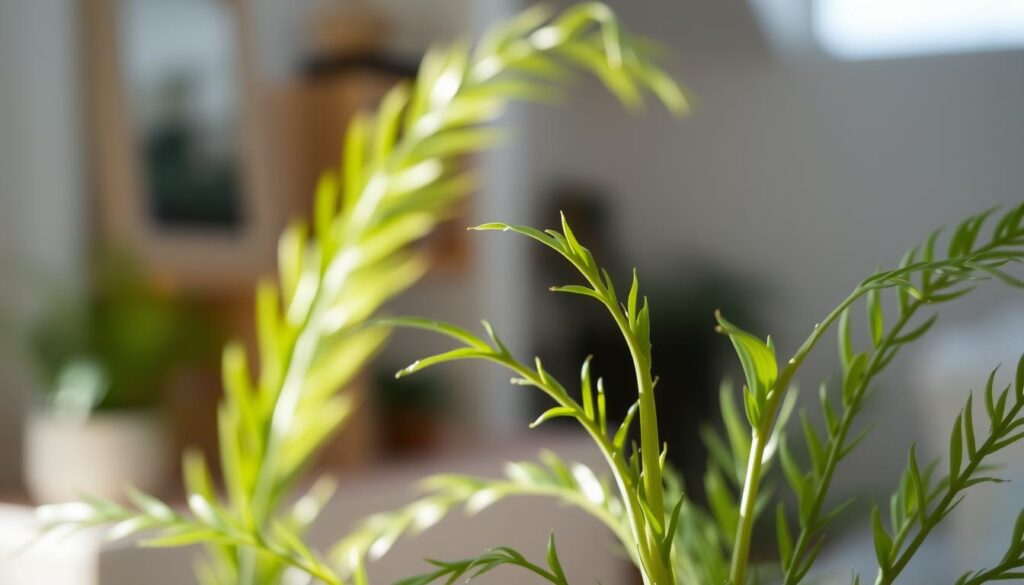Have you ever come across a plant that’s as striking as it is versatile? Let me introduce you to false sisal, a plant that has captured my heart with its dramatic presence and practical uses. Native to Florida, this plant is a gem for both DIY enthusiasts and garden lovers alike.
False sisal is known for its bright green, long foliage with small teeth along the edges, forming a tight, symmetrical rosette. It can grow dramatically, reaching up to five feet tall and wide, and in ideal conditions, it can spread up to ten feet. This plant isn’t just about looks; it’s also functional, making it perfect for crafts and home decor projects.
One of the most exciting features of false sisal is its growth habit. It produces offsets, making it easy to propagate and share with friends. And when it matures, it puts on a show with a tall flower stalk that blooms in late fall or early winter. Whether you’re growing it in containers, raised planters, or a tropical-inspired landscape, false sisal adapts beautifully.
To keep your false sisal happy, it prefers full sun to light shade and well-draining soil. In the following sections, I’ll guide you through everything from propagation to pest management, ensuring you have all the knowledge you need to thrive with this incredible plant. So, let’s dive in and explore the wonderful world of false sisal together!
Getting Started on My False Sisal Journey
Starting my journey with false sisal was an exciting adventure. I wanted to create a welcoming space for this plant, so I focused on finding the perfect spot and preparing the soil.
Choosing the Right Location and Light Conditions
False sisal thrives in full sun to light shade. I chose a spot where it could get at least six hours of direct sunlight. In warmer climates, partial shade helps prevent scorching and promotes deeper green leaves. This balance ensures healthy growth and vibrant foliage.
Preparing the Soil and Garden Space
The soil needed to be well-draining to prevent root rot. I mixed in organic matter like compost to enrich it. Testing the pH, I aimed for a slightly acidic to neutral range. Proper drainage and balanced soil set a strong foundation for the plant to flourish.
By selecting the right location and soil, I created an ideal environment for my false sisal. These steps are crucial for its growth and will help in successful propagation and care.
Mastering False Sisal Propagation and Nurturing
Learning to propagate and care for false sisal has been a rewarding experience. With the right techniques, you can help this plant thrive and enjoy its beauty for years to come.
Planting Techniques and Optimal Spacing
When planting false sisal, spacing is key. I recommend planting them 3 to 5 feet apart to ensure good airflow and enough room for growth. This spacing also helps prevent pests and diseases from spreading easily.
Watering, Fertilizing, and Ongoing Care
Watering should be deep but infrequent to encourage strong root development. I water at the base of the plant to avoid getting the leaves wet, which can lead to rot. During the growing season, I use a balanced NPK fertilizer every 4 to 6 weeks to promote steady growth.
Propagation Methods: Seeds and Offshoots
False sisal can be propagated through seeds or offshoots. Seeds take longer to germinate but offer genetic diversity. Offshoots are faster and more reliable, producing plants identical to the parent. I prefer offshoots for consistent results and quicker establishment.

By following these steps, you’ll be well on your way to becoming a false sisal expert, enjoying the plant’s growth and vitality in your garden or indoor space.
Understanding False Sisal’s Characteristics and Benefits
False sisal is a remarkable plant known for its striking appearance and practical uses. Native to Florida, it offers both beauty and functionality, making it a favorite among gardeners and DIY enthusiasts. This section delves into its unique characteristics and the benefits it brings to various landscapes.
Lifecycle, Growth Rate, and Size Considerations
False sisal grows slowly but can reach impressive heights of 4 to 8 feet, and up to 20 feet when in flower. Its lifecycle spans 3 to 5 years, from germination to maturity. The plant begins as a seedling, develops into a robust rosette, and eventually blooms with a dramatic flower stalk in late fall or early winter.
Distinctive Foliage, Flowers, and Ecological Perks
The plant’s foliage forms a tight, symmetrical rosette with fleshy, green leaves. Its flower stalk emerges in late fall or early winter, adding a touch of drama to any landscape. False sisal supports local wildlife and is ideal for natural landscapes, rock gardens, and accent plantings. It’s also beneficial for ecological restoration, especially in coastal areas of Florida.
With its adaptability and ornamental appeal, false sisal is perfect for enhancing outdoor spaces while supporting the environment. Its unique features make it a practical choice for both landscaping and cultural significance.
Identifying and Overcoming Common Problems and Pests
Every plant has its challenges, and false sisal is no exception. Whether it’s watering woes, pesky pests, or unexpected diseases, being prepared to tackle these issues is key to keeping your false sisal thriving. Let’s dive into the most common problems and how to solve them.
Troubleshooting Watering, Light, and Temperature Challenges
One of the most common issues with false sisal is improper watering. Overwatering can cause yellowing leaves, while underwatering leads to shriveled foliage. To avoid these problems, water deeply but infrequently, allowing the soil to dry out between sessions. This method encourages strong root development and prevents root rot. Additionally, ensure your plant gets enough sunlight—false sisal prefers full sun to light shade. Too little light can result in leggy growth, while too much can cause stress. Maintaining a balance is crucial for healthy growth.
Managing Root Issues, Diseases, and Fungal Threats
Root rot is a common issue, often caused by poor drainage. To prevent this, plant in well-draining soil and avoid waterlogging. If you notice soft, blackened roots, it’s time to act quickly. Remove the affected roots and repot the plant in fresh, dry soil. Fungal diseases like powdery mildew can also appear, especially in humid conditions. Improve air circulation around your plant and treat with a fungicide if necessary.
Preventing Pests and Animal Damage
Pests like spider mites and scale insects can infest your false sisal. Regularly inspect your plant and treat any infestations with insecticidal soap or Neem oil. For persistent problems, manual removal of affected areas may be needed. Additionally, protect your plant from wildlife like deer, rabbits, and squirrels, which may find the leaves irresistible. Use repellents or barriers to safeguard your false sisal from these unwanted visitors.

- Check for yellowing leaves (overwatering) or shriveling (underwatering).
- Ensure proper light exposure to prevent leggy growth or stress.
- Inspect for root rot and treat promptly if detected.
- Use fungicides for fungal diseases and improve air circulation.
- Treat pests with insecticidal soap or Neem oil.
- Protect plants from wildlife with repellents or barriers.
By staying vigilant and taking proactive steps, you can overcome these challenges and enjoy a healthy, thriving false sisal plant. Regular maintenance and quick action when problems arise will keep your plant robust and resilient.
Wrapping Up My False Sisal Experience
My journey with false sisal has been nothing short of inspiring. This plant, native to Florida, has shown me how resilience and beauty can go hand in hand. From selecting the perfect spot with plenty of sun to mastering the art of propagation, every step has been a learning opportunity.
Key to its success is well-draining soil and careful watering. I’ve found that allowing the soil to dry slightly between waterings encourages strong root growth. Fertilizing during the growing season also keeps it thriving. When it comes to pests, a quick treatment with insecticidal soap does the trick.
One of the most rewarding moments is watching it bloom. The tall flower stalk that appears in late fall or early winter is a true showstopper. Plus, its ability to support local wildlife adds to its appeal. Despite its drought tolerance, consistent care ensures it remains a stunning addition to any garden.
Rarely found in native nurseries, false sisal is a unique gem worth the effort. With patience and proper care, you can enjoy its striking foliage and ecological benefits. Don’t hesitate to explore and experiment—your garden will thank you!
